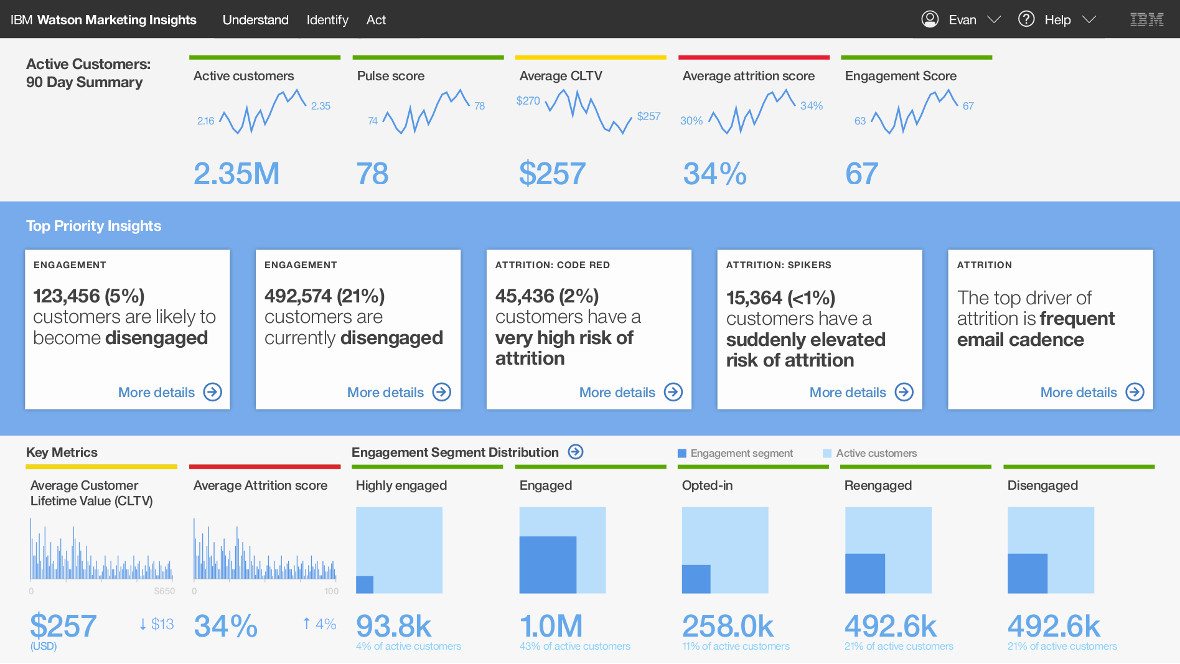“While every customer journey is different, each involves multiple touch points before the purchase is made. It’s up to the brands to make every one of these journeys is seamless and end with a satisfied customer,” said Maria Winans, Chief Marketing Officer, IBM Watson Customer Engagement.
“With these new cognitive capabilities, marketers can now get the audience insights needed to strengthen customer engagement and deliver campaigns that resonate with every single customer.”
How will it help?
IBM states that using the insights tool, marketers will be able to predict customer’s potential response response to a new campaign, based on their previous behavior. For example, the cognitive capabilities may show that customers who regularly abandon their shopping cart are more likely to defect from a brand than those who frequently return products.
What does it do?
IBM Watson Marketing claims to feature cognitive capabilities that can uncover predictors in customers by examining their interactions with the company, whether it’s in the store or on email, digital and social media. By continuously updating this data, the offering shall reveal new audience profiles and customer segments as the relative importance of their behavior predictions change.

How does it do it?
Watson Customer Engagement portfolio, combines Watson cognitive capabilities with expertise in marketing, commerce and supply chain to create an end-to-end digital experience for businesses across industries and size. All this data is delivered through the cloud and the IBM Watson Customer Engagement capabilities, are individual features that companies can introduce over a period of time, based on where and when there is a business need.
What does it entail?
The new offering also features a visual dashboard that includes details on the context and reasoning behind the findings. Marketers can then leverage this information to target campaigns designed specifically to engage this group with a personalized offer.
IBM claims that Watson Marketing Insights ensures that teams don’t have to settle for static segments that traditionally don’t consider variables such as how customers have interacted with the brand over time.
In addition, marketers using this tool will no longer need to rely on analysis from data scientists because these insights are automatically presented to them and updated automatically over time to ensure they are always acting on the most up-to-date details.
